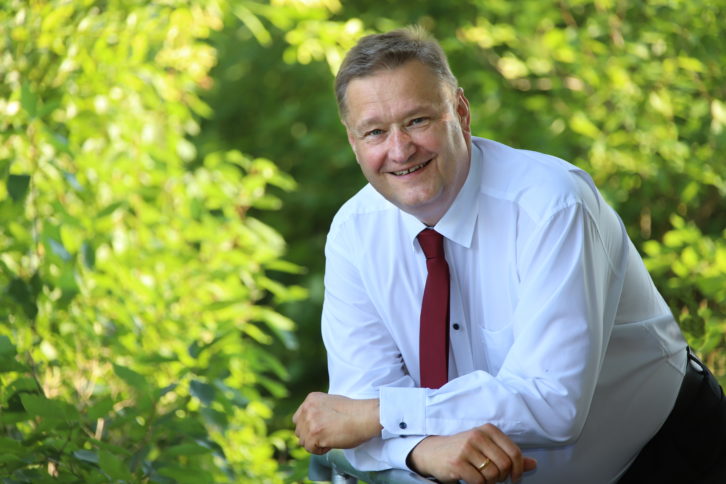 When did d&b begin to implement a sustainability strategy?
When did d&b begin to implement a sustainability strategy?
d&b embarked on its sustainability journey 10 years ago by joining Eco-Management and Audit Scheme (EMAS), an EU sustainability management system. Since joining, d&b has improved its Backnang, Germany offices, by replacing all the lighting fixtures with LED bulbs, installing electric car charging stations, introducing an employee bicycle leasing programme, and implementing sustainability projects with nearby educational institutions. This initiative also granted our company ISO 14001 certification.
After making these initial changes, our team explored how d&b could leverage its sustainability initiatives from an external focus. To do so, our team shifted attention to leveraging projects that would support a circular economy.
Our first initiative in this space took the form of a remanufacturing programme called Certified Pre-Owned (CPO) where d&b takes old equipment at the end of its life. We break it down, repair, change and update it to make new equipment. d&b is the first and only manufacturer in the pro audio industry to offer a program like this. Remanufacturing extends the life of a d&b system with all the benefits of buying new, meaning our systems are more accessible than ever before.
Why did d&b take this step?
d&b is incredibly conscious of the impact that the entertainment industry has on the environment. The industry consumes a substantial amount of resources and this responsibility weighs on us as individuals in the industry and as businesses. Our customers, partners and artists recognise just how important it is that we protect the planet and operate sustainably.
What particular sustainability issues are you working on?
Outside of the circular economy, d&b is exploring the impact of audience travel for festivals and concerts. Today, around 60 to 80 percent of an event’s emissions stem from private travel. To mitigate this impact the festival location must move closer to cities, with access to public transport.
With the location shift towards metropolitan areas, festival and concert management risk violating local government noise pollution regulations. This risk is something we identified in an early stage at d&b is a core driver behind some of our latest loudspeaker technology.
Apart from new loudspeaker system design protocols featuring enhanced sound control, our team also welcomed two new tools, NoizCalc and ArrayCalc. With these tools, sound designers and sound engineers can better identify and correct potential noise problems before they arise.
Do you think there is more the AV industry could be doing to protect the environment?
The entertainment industry is still at the beginning of this environmental journey. I’m extremely proud of d&b for spearheading meaningful action to make the industry more environmentally sustainable. Our work as an organisation is nowhere near complete; however, we look forward to learning and growing to help lessen the carbon footprint of entertainment tours and festivals.
What is next for d&b in this area?
d&b now has a dedicated environmental, social and governance (ESG) team whose focus is exploring which areas and issues d&b can tackle next while simultaneously advancing the initiatives in place. d&b has evolved the company massively over the past two years, and our new acquisitions group members – SFL and White Light – are part of the newly formed d&b solutions business. We are now taking the next step in working towards climate neutrality in all our facilities and offices across the group.
Sustainability is something you work on everyday by setting new goals and targets. We cannot change overnight but we can put strategies in place to work towards a better future, for everyone.
Click here to read our recent feature on the AV industry’s approach to green issues.